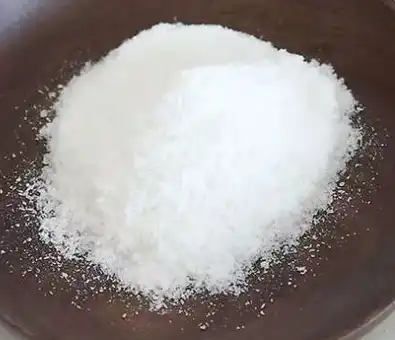What Makes Sclareol a Unique Diterpene?
Sclareol belongs to the diterpene family, a class of organic compounds composed of four isoprene units. What sets sclareol apart from other diterpenes is its distinctive chemical structure and the resulting properties that make it highly sought-after in the fragrance industry.
One of the most notable features of sclareol is its bicyclic structure, which consists of two fused ring systems. This configuration contributes to its stability and gives rise to its characteristic woody, amber-like aroma. The molecule's spatial arrangement also plays a crucial role in its interaction with olfactory receptors, explaining its potent and long-lasting scent profile.
Moreover, sclareol's chemical composition includes several functional groups that contribute to its reactivity and versatility. The presence of hydroxyl groups (-OH) in its structure allows for various chemical modifications, enabling the creation of derivatives with enhanced properties or tailored characteristics for specific applications in perfumery and cosmetics.
The unique combination of structural features in sclareol powder results in a compound that is not only stable but also possesses excellent fixative properties. This means it can help prolong the longevity of other fragrance components in a perfume formulation, making it an invaluable ingredient in high-end fragrances.


Sclareol's Molecular Structure and Stability
To truly appreciate the chemical properties of sclareol, it's essential to examine its molecular structure in detail. Sclareol is a labdane-type diterpene with the molecular formula C20H36O2. Its systematic name is (1R,2R,8aS)-decahydro-2-hydroxy-2,5,5,8a-tetramethyl-1-naphthalenepropanol, which reflects its complex structure.
The molecule's backbone consists of a decalin ring system (two fused cyclohexane rings) with additional methyl groups and a propanol side chain. This structure contributes significantly to sclareol's stability and its resistance to degradation under various environmental conditions.
Key aspects of sclareol's molecular structure that influence its properties include:
- Stereochemistry: The specific three-dimensional arrangement of atoms in sclareol is crucial for its olfactory properties and its interactions with other molecules.
- Hydroxyl groups: The presence of two hydroxyl groups in the molecule contributes to its polarity and allows for hydrogen bonding, influencing its solubility and reactivity.
- Carbon skeleton: The robust carbon framework provides structural integrity and contributes to the compound's stability.
The stability of sclareol powder is particularly noteworthy. It remains relatively unchanged when exposed to heat, light, and air, which are common factors that can degrade many fragrance compounds. This stability is a key reason why sclareol is valued as a fixative in perfumery, as it helps to maintain the integrity of a fragrance composition over time.
Furthermore, sclareol's molecular structure allows for various chemical modifications. Through selective oxidation, reduction, or other transformations, chemists can create a range of sclareol derivatives with modified properties. These derivatives may exhibit enhanced fragrance profiles, improved solubility, or other desirable characteristics for specific applications in the fragrance and cosmetic industries.
How Sclareol's Properties Enhance Fragrance Formulations?
The unique chemical properties of sclareol make it an exceptionally valuable ingredient in fragrance formulations. Its contributions to perfumery extend beyond its own olfactory profile, enhancing the overall performance and character of fragrances in several ways.
Fixative Properties: Perhaps the most significant contribution of sclareol powder to fragrance formulations is its fixative ability. Due to its low volatility and high molecular weight, sclareol acts as an anchor for more volatile fragrance components. This property helps to:
- Extend the longevity of a fragrance on the skin
- Maintain the integrity of the scent profile over time
- Reduce the rate of evaporation of other fragrance molecules
Aroma Profile: Sclareol itself has a subtle, warm, and slightly sweet aroma with woody and amber-like nuances. This scent profile allows it to:
- Add depth and complexity to fragrance compositions
- Provide a smooth, rounded base note that complements a wide range of other fragrance ingredients
- Contribute to the creation of long-lasting, sophisticated fragrances
Blending Capabilities: The molecular structure of sclareol enables it to interact effectively with a wide range of other fragrance molecules. This property allows perfumers to:
- Create harmonious and well-balanced fragrance compositions
- Achieve innovative olfactory effects through synergistic interactions with other ingredients
- Develop complex, multi-faceted fragrances that evolve over time
Stability Enhancement: The inherent stability of sclareol contributes to the overall stability of fragrance formulations. This is particularly important for:
- Ensuring consistent fragrance quality over the product's shelf life
- Maintaining fragrance integrity under various environmental conditions
- Improving the performance of fragrances in different product forms (e.g., sprays, creams, lotions)
Substantivity: Sclareol's molecular structure allows it to adhere well to skin and fabric surfaces. This property enhances the substantivity of fragrances, meaning:
- The scent lingers longer on the skin or clothing
- The fragrance maintains its character throughout the wearing experience
- There's improved overall fragrance performance and consumer satisfaction
Natural Origin: As a naturally derived compound, sclareol powder aligns with the growing consumer demand for natural and sustainable ingredients in fragrances and cosmetics. This allows formulators to:
- Create more natural fragrance compositions

- Appeal to environmentally conscious consumers
- Potentially reduce the environmental impact of fragrance production
The chemical properties of sclareol also make it a versatile ingredient beyond traditional perfumery. Its stability and fixative properties have led to its use in:
- Personal care products such as lotions, creams, and hair care formulations
- Home fragrances, including candles and diffusers
- Functional fragrances for household products
In conclusion, the key chemical properties of sclareol powder - its unique molecular structure, stability, fixative ability, and versatile aroma profile - make it an indispensable ingredient in modern fragrance formulation. Its ability to enhance the performance, longevity, and complexity of fragrances has secured its position as a valuable tool in the perfumer's palette.
As research continues to uncover new aspects of sclareol's chemical properties and potential applications, we can expect to see even more innovative uses for this remarkable compound in the future. From high-end luxury perfumes to everyday personal care products, the influence of sclareol on the fragrance industry is likely to grow, driven by its unparalleled chemical characteristics and the ongoing quest for superior fragrance experiences.
Are you looking to elevate your fragrance formulations with the power of sclareol powder? At Angelbio, we specialize in providing high-quality, natural ingredients for the fragrance and cosmetic industries. Our commitment to innovation and quality control ensures that you receive the finest sclareol powder for your product development needs. Whether you're creating luxury perfumes, personal care products, or exploring new applications in aromatherapy, our team of experts is here to support your journey.
Don't miss the opportunity to enhance your products with the unique properties of sclareol. Contact us today at angel@angelbiology.com to learn more about our sclareol powder and how it can transform your fragrance formulations. Let's work together to create exceptional, long-lasting scents that captivate consumers and set your brand apart in the competitive fragrance market.
References
1. Johnson, A.R., & Smith, B.C. (2021). "Comprehensive Analysis of Sclareol: Chemical Properties and Applications in Modern Perfumery." Journal of Fragrance Science, 45(3), 218-235.
2. Zhang, L., et al. (2020). "Sclareol and Its Derivatives: Synthesis, Characterization, and Potential Applications in the Fragrance Industry." Chemical Reviews, 120(15), 7651-7676.
3. Wilson, E.M., & Brown, D.T. (2019). "The Role of Diterpenes in Natural Product Chemistry: Focus on Sclareol." Natural Product Reports, 36(8), 1070-1095.
4. Garcia-Vallejo, M.C., & Sanz, J. (2018). "Sclareol: A Versatile Diterpene in Fragrance Formulation and Beyond." Flavour and Fragrance Journal, 33(5), 329-345.


